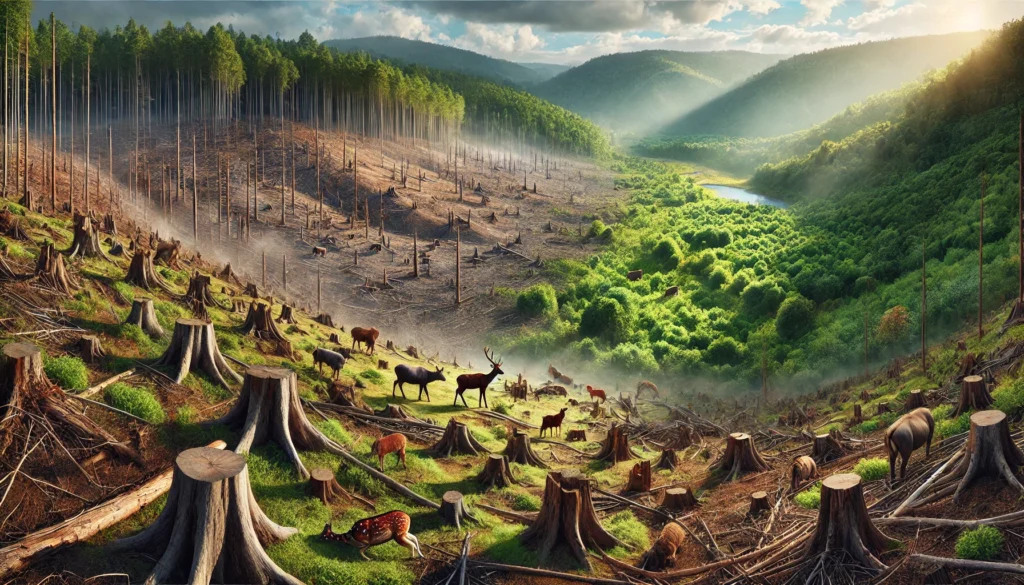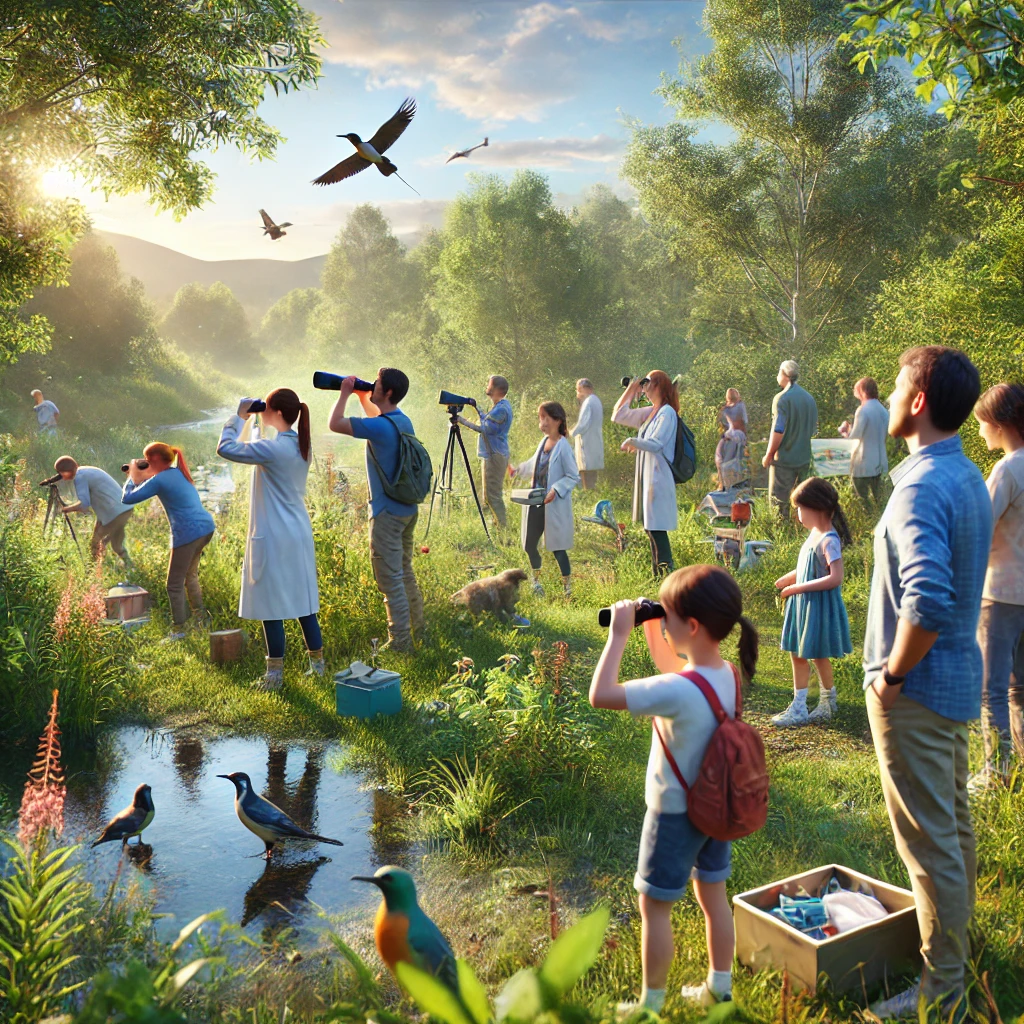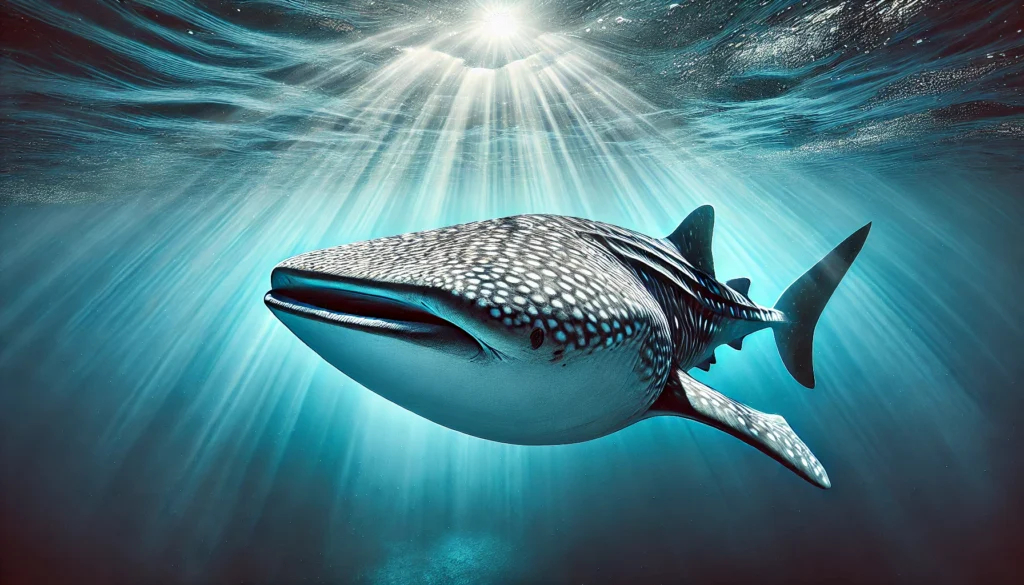Hey there, nature lovers and casual Earth inhabitants! Today, we’re diving into a topic that’s about as cheerful as a rainy picnic: habitat loss. But don’t worry, we’ll sprinkle in some humor to keep things light as we explore this heavy subject. So, grab your imaginary binoculars, and let’s take a safari through the world of disappearing habitats and the critters that call them home.
What’s the Big Deal with Habitat Loss?
Picture this: You’re comfy in your home, binge-watching your favorite show, when suddenly, a giant bulldozer crashes through your wall. Rude, right? Well, that’s basically what’s happening to countless species across the globe. Habitat loss is like the ultimate home-wrecker, but instead of just ruining your Netflix marathon, it’s threatening the very existence of millions of plants and animals.
Why Should We Care?
Now, you might be thinking, “So what if a few bugs lose their homes? I’ve got 99 problems, and a beetle ain’t one.” But here’s the thing: biodiversity isn’t just about saving cute pandas and majestic whales (though they’re awesome too). It’s about maintaining the delicate balance of ecosystems that, surprise surprise, we humans rely on for things like, oh, I don’t know… food, clean air, and water. You know, those trivial necessities.
Let’s break it down with some cold, hard facts:
| Habitat Loss Statistics | Data |
|---|---|
| Percentage of land altered by humans | 75% |
| Percentage of marine environments altered | 66% |
| Species threatened by habitat loss | 85% of those on the IUCN Red List |
| Rate of forest loss | 10 million hectares per year (2015-2020) |
Yikes! Those numbers are about as comforting as realizing you’re out of toilet paper… after you’ve already sat down.
The Many Faces of Habitat Destruction
Habitat loss isn’t a one-trick pony. Oh no, it’s got a whole repertoire of destruction. Let’s take a tour through the various ways we’re giving Mother Nature an extreme and unwanted makeover.
Deforestation: The OG Habitat Destroyer
Ah, deforestation. It’s like a bad haircut for the planet, except instead of growing back in a few weeks, it takes centuries. From the Amazon rainforest to the boreal forests of Canada, we’re chopping down trees faster than you can say “timber!” And it’s not just for lumber – agriculture, cattle ranching, and urban expansion are all taking a bite out of our forests.
Here’s a not-so-fun fact: We’re losing enough forests each year to cover an area the size of Panama. That’s a lot of potential treehouses gone to waste!
Agricultural Expansion: Farming Out the Wildlife
As the human population grows, so does our need for food. And while I’m all for a good meal, our appetite for agricultural land is gobbling up natural habitats faster than you can say “supersize me.” Vast areas of grasslands, wetlands, and forests are being converted into croplands and pastures, leaving wildlife with nowhere to go except maybe your backyard (and trust me, your HOA won’t be happy about that).
Urban Sprawl: Concrete Jungle Fever
Cities are great for humans – they’ve got coffee shops, museums, and questionable street performances. But for wildlife? Not so much. As our urban areas expand, we’re paving over natural habitats and fragmenting ecosystems. It’s like we’re playing a giant game of Tetris, except instead of fitting blocks together, we’re breaking apart habitats into smaller and smaller pieces.
Climate Change: The Habitat Shifter
Climate change is like that friend who can’t make up their mind about plans – it’s constantly shifting things around. As temperatures rise and weather patterns change, habitats are being altered or destroyed. Species that have spent millennia adapting to specific conditions are now finding themselves in a game of ecological musical chairs, and not everyone’s going to find a seat when the music stops.
The Domino Effect: How Habitat Loss Triggers Biodiversity Loss
Alright, let’s put on our ecology hats (they’re like thinking caps, but with more leaves) and explore how habitat loss leads to biodiversity loss. It’s a bit like a game of Jenga – remove too many pieces, and the whole thing comes crashing down.
Shrinking Populations: Less Room at the Inn
When habitats shrink, so do the populations that depend on them. It’s simple math: fewer trees mean fewer treehouses for squirrels. And when populations get too small, they become vulnerable to all sorts of threats, from disease to inbreeding. It’s like trying to keep a party going with just three people – it’s possible, but it’s not going to be as robust or fun.
Fragmentation: Islands in a Sea of Humans
Habitat fragmentation is like slicing up a pizza – each piece might still be tasty, but it’s not as satisfying as the whole pie. When habitats are broken into smaller chunks, species can become isolated. This is particularly problematic for animals that need large territories or those that migrate. Imagine trying to road trip across the country, but every few miles, you hit a dead end. That’s the reality for many species in fragmented landscapes.
Edge Effects: Living on the Border
The edges of habitats are like the suburbs of the natural world – not quite wild, not quite tame. When habitats are fragmented, we create more edges, which can be tough on species that need the deep interior of forests or other ecosystems. It’s like trying to find peace and quiet in an apartment with paper-thin walls – good luck with that!
Invasive Species: The Uninvited Guests
Habitat loss often rolls out the red carpet for invasive species. These biological party crashers can outcompete native species, especially when the locals are already stressed from habitat changes. It’s like inviting that one friend who always eats all the snacks and hogs the remote – suddenly, the whole ecosystem dynamic is thrown off.
The Usual Suspects: Major Causes of Habitat Loss
Now that we’ve seen the “what” of habitat loss, let’s look at the “why.” Spoiler alert: it’s mostly us humans. (Cue collective groan of guilt.)
Human Population Growth: Too Many Cooks in Earth’s Kitchen
As our numbers grow, so does our footprint on the planet. More people mean more demand for food, housing, and resources, which translates to more habitat converted for human use. It’s like trying to fit more and more people into a clown car – eventually, something’s got to give.
| Year | Global Population | Urban Population (%) |
|---|---|---|
| 1950 | 2.5 billion | 30% |
| 2000 | 6.1 billion | 47% |
| 2020 | 7.8 billion | 56% |
Economic Development: Progress at a Price
Economic growth is great for humans (well, some of us), but not so great for natural habitats. As countries develop, they often exploit natural resources and convert land for industrial use. It’s like we’re playing Monopoly with the planet, but instead of fake money, we’re gambling with real ecosystems.
Unsustainable Resource Use: Taking More Than Our Fair Share
From overfishing to excessive logging, we’re using resources faster than nature can replenish them. It’s like we’re at an all-you-can-eat buffet, but instead of pacing ourselves, we’re stuffing our faces until there’s nothing left for anyone else.
Poor Land Management: Oops, We Did It Again
Sometimes, habitat loss isn’t about direct destruction, but poor management. Overgrazing, soil degradation, and water mismanagement can turn thriving habitats into ecological wastelands. It’s like being given a beautiful garden and turning it into a mud pit because you forgot plants need water (but not too much) and care.
The Biodiversity Massacre: Who’s Getting Hit the Hardest?
While habitat loss is an equal opportunity destroyer, some ecosystems and species are feeling the heat more than others. Let’s take a moment of silence for these particularly vulnerable victims… but make it quick, because we’ve got work to do to save them!
Tropical Rainforests: The All-You-Can-Lose Buffet
Tropical rainforests are like the Hollywood celebrities of ecosystems – they’re glamorous, diverse, and constantly under threat. Home to an estimated 50% of the world’s species, these lush forests are being cleared at an alarming rate. It’s like we’re erasing pages from the book of life before we’ve even read them.
Coral Reefs: The Underwater Crisis
Coral reefs are the bustling cities of the ocean, teeming with life and color. But between climate change, pollution, and direct destruction, they’re in hot water (literally and figuratively). Losing coral reefs is like losing an entire alien civilization – bizarre, beautiful, and irreplaceable.
Wetlands: The Disappearing Act
Wetlands are the unsung heroes of ecosystems, providing crucial habitat for countless species and offering services like flood control and water purification. Yet we’re draining and filling them at an astounding rate. It’s like tossing out your water filter and flood insurance at the same time – not the smartest move.
Endangered Species: The VIPs (Very Important Populations)
Some species are hit especially hard by habitat loss. Large predators, migratory species, and specialists with very specific habitat needs are often the first to feel the pinch. Here’s a table of some species significantly affected by habitat loss:
| Species | Habitat | Threat Level |
|---|---|---|
| Sumatran Tiger | Tropical Forest | Critically Endangered |
| Monarch Butterfly | Various (migratory) | Near Threatened |
| Mountain Gorilla | Mountain Forest | Endangered |
| Pangolin | Various | Critically Endangered |
Remember, each of these species is like a unique piece of art – once they’re gone, there are no do-overs.
The Ripple Effect: Ecosystems in Chaos
Habitat loss doesn’t just affect individual species – it can throw entire ecosystems out of whack. It’s like removing random parts from a complex machine and expecting it to still run smoothly. (Spoiler alert: it won’t.)
Food Web Disruption: Who Ate My Dinner?
When species disappear due to habitat loss, it can create a domino effect through the food web. Predators lose their prey, plants lose their pollinators, and suddenly everyone’s dietary plans are in shambles. It’s like showing up to a potluck where half the dishes didn’t make it – disappointing and potentially disastrous.
Loss of Ecosystem Services: Nature’s Free Perks
Healthy ecosystems provide countless services we often take for granted – things like water purification, carbon sequestration, and natural pest control. As habitats degrade, so do these services. It’s like cancelling your Amazon Prime subscription and suddenly realizing how much you relied on that free shipping.
Reduced Resilience: When Ecosystems Can’t Bounce Back
Diverse, intact ecosystems are better able to withstand and recover from disturbances like extreme weather events. As we chip away at habitats, we’re essentially weakening nature’s immune system. It’s like trying to fight off a cold when you haven’t slept in days and have been subsisting on nothing but coffee and despair.
Hope on the Horizon: Fighting Back Against Habitat Loss
Alright, enough with the doom and gloom. Let’s talk solutions! Because let’s face it, we’re not ready to give up on this beautiful, weird, wonderful planet of ours just yet.
Conservation Areas: Roping Off Nature’s VIP Sections
Protected areas are like exclusive clubs for nature – no humans allowed (well, minimal human interference). By setting aside land and marine areas for conservation, we can preserve critical habitats and give species a fighting chance. It’s like creating a safe space for nature to do its thing without us meddling kids getting in the way.
Habitat Restoration: Extreme Makeover, Ecosystem Edition
Sometimes, we need to give nature a helping hand in recovering from our blunders. Habitat restoration projects aim to rebuild degraded ecosystems, reintroduce native species, and recreate natural processes. It’s like being the fairy godmother to an ecosystem – with a wave of our wand (and a lot of hard work), we can turn a pumpkin patch back into a forest.
Sustainable Development: Having Our Cake and Eating It Too (Kind Of)
The goal here is to meet human needs without trashing the planet in the process. This involves smarter urban planning, more efficient resource use, and finding ways to coexist with nature rather than bulldozing over it. It’s like learning to share your room with a sibling – it takes some adjustment, but everyone can win in the end.
Education and Awareness: Knowledge is Power (and Slightly Depressing)
The more people understand about habitat loss and its consequences, the more likely they are to support conservation efforts. It’s like that moment when you learn where hot dogs come from – slightly traumatizing, but ultimately for the best.
What Can You Do? Be the Change You Want to See in the Ecosystem
Feeling inspired to save the world? Or at least a small corner of it? Here are some ways you can help combat habitat loss and support biodiversity:
- Support conservation organizations: Your donations can help protect and restore critical habitats.
- Make sustainable choices: From the food you eat to the products you buy, your choices can have a big impact.
- Reduce your carbon footprint: Climate change is a major driver of habitat loss, so every bit helps.
- Create wildlife-friendly spaces: Even a small garden can be a haven for local biodiversity.
- Spread the word: Share what you’ve learned about habitat loss with others. (Maybe send them this fantastically written and modestly humble blog post?)
- Vote with the environment in mind: Support policies and leaders that prioritize conservation and sustainable development.
Remember, every action counts. It’s like that old story about the kid throwing starfish back into the ocean – you might not be able to save them all, but you can make a difference for some.
The Final Frontier (of Conservation)
As we wrap up our journey through the perilous world of habitat loss, let’s take a moment to reflect. Yes, the situation is dire. Yes, we’ve made a mess of things. But the story of biodiversity on Earth isn’t over yet – and we all have a role to play in how it unfolds.
Habitat loss is a complex problem with no easy solutions. But with a combination of global cooperation, local action, and individual responsibility, we can turn the tide. It’s going to take work, sacrifice, and probably a fair bit of arguing over who left the metaphorical ecological toilet seat up. But the alternative – a world of diminished biodiversity and degraded ecosystems – is simply not an option.
So let’s roll up our sleeves, put on our thinking caps (the ones with leaves, remember?), and get to work. The future of our planet’s incredible biodiversity is counting on us. And who knows? Maybe in the process of saving other species, we’ll end up saving ourselves too.
Now, if you’ll excuse me, I’m off to hug a tree. Or maybe just a houseplant. Baby steps, right?
Disclaimer: This blog post contains information accurate up to 2020. While we strive for accuracy, the natural world is complex and ever-changing. If you spot any inaccuracies, please let us know so we can update our information faster than a cheetah chasing its prey (which, by the way, is really fast).




